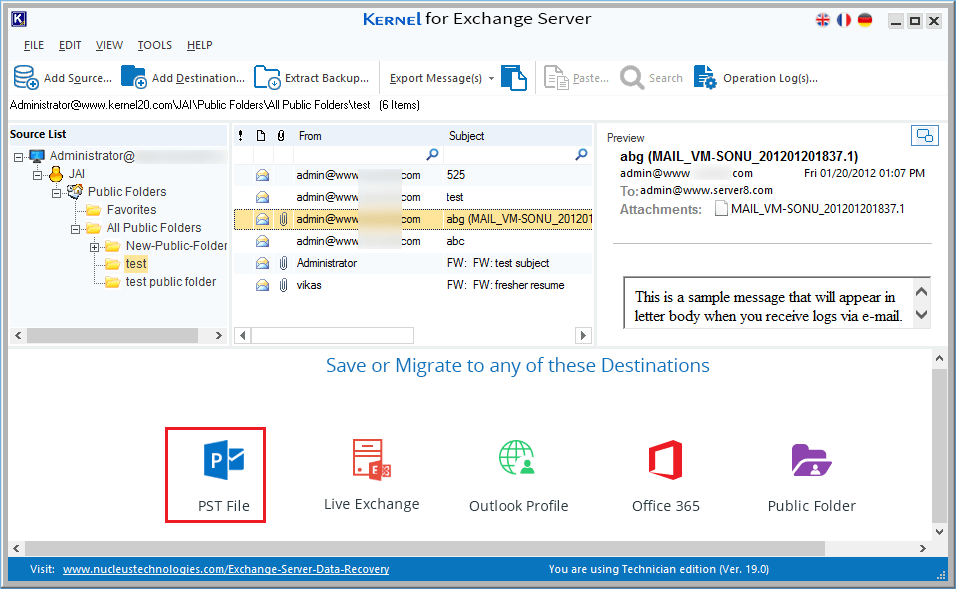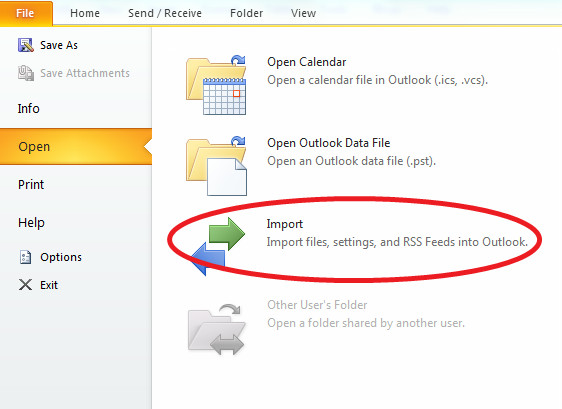
 Automatic public folder moves based on public folder mailbox quota usage. If we were to peek behind the Exchange Online curtain, we would see two automated processes always running to make this happen: In Exchange Online we automatically perform the public folder mailbox management so you may focus your time managing the actual public folders and their content. Our on-premises customers have to create public folder mailboxes, monitor their usage, create new public folder mailboxes when necessary, and split content to different public folder mailboxes as their content grows over time. As you previously read, Modern public folders starting with Exchange Server 2013 are stored within a new mailbox type in the mailbox database. $fnFileName = "c:\temp\" + $MailboxName + "-ContactsExport.When your public folder content migration to Exchange Online is complete or you create public folders for the very first time, you do not have to worry about managing many aspects of public folders. namespace while( $fiItems.MoreAvailable -eq $true). $Params.IncludeDebugInformation= $False. # Choose to ignore any SSL Warning issues caused by Self Signed Certificates. $creds = New-Object ( $(), $psCred.GetNetworkCredential().password.ToString()). #Credentials Option 1 using UPN for the windows Account. # Set Credentials to use two options are availible Option1 to use explict credentials or Option 2 use the Default (logged On) credentials. $service = New-Object .ExchangeService( $ExchangeVersion). Add-Type -Path "C:\Program Files\Microsoft\Exchange\Web Services\2.0\". # Get the Mailbox to Access from the 1st commandline argument. I've put a download of this script here the code looks like
Automatic public folder moves based on public folder mailbox quota usage. If we were to peek behind the Exchange Online curtain, we would see two automated processes always running to make this happen: In Exchange Online we automatically perform the public folder mailbox management so you may focus your time managing the actual public folders and their content. Our on-premises customers have to create public folder mailboxes, monitor their usage, create new public folder mailboxes when necessary, and split content to different public folder mailboxes as their content grows over time. As you previously read, Modern public folders starting with Exchange Server 2013 are stored within a new mailbox type in the mailbox database. $fnFileName = "c:\temp\" + $MailboxName + "-ContactsExport.When your public folder content migration to Exchange Online is complete or you create public folders for the very first time, you do not have to worry about managing many aspects of public folders. namespace while( $fiItems.MoreAvailable -eq $true). $Params.IncludeDebugInformation= $False. # Choose to ignore any SSL Warning issues caused by Self Signed Certificates. $creds = New-Object ( $(), $psCred.GetNetworkCredential().password.ToString()). #Credentials Option 1 using UPN for the windows Account. # Set Credentials to use two options are availible Option1 to use explict credentials or Option 2 use the Default (logged On) credentials. $service = New-Object .ExchangeService( $ExchangeVersion). Add-Type -Path "C:\Program Files\Microsoft\Exchange\Web Services\2.0\". # Get the Mailbox to Access from the 1st commandline argument. I've put a download of this script here the code looks like 
Then set the property within the Item Iteration $expObj = "" | select DisplayName,GivenName,Surname,Gender,Email1DisplayName,Email1Type,Email1EmailAddress,BusinessPhone,MobilePhone,HomePhone,BusinessStreet,BusinessCity,BusinessState,HomeStreet,HomeCity,HomeState,JobTitle To add other properties to script eg like the JobTitle you need to make the following modifications In this sample script I'll show you how you can export data from the normal contact strongly typed properties like GivenName and Surname and the Indexed properties which are used to store the EmailAddresses, PhoneNumbers and Address details and also any extended properties like the Gender property which there are no strongly typed property for.Īs I mentioned Contacts have a lot of properties so this script doesn't export everything just a subsection to show how to export properties from each of the different subgroups I talked about. Contacts are one of the more richer exchange datatypes and can hold a lot of different information which you may or may not want to capture in a CSV export.

Somebody asked last week about exporting contacts from Exchange via EWS to a CSV file and I realised I didn't have a basic sample for doing this.







 0 kommentar(er)
0 kommentar(er)
